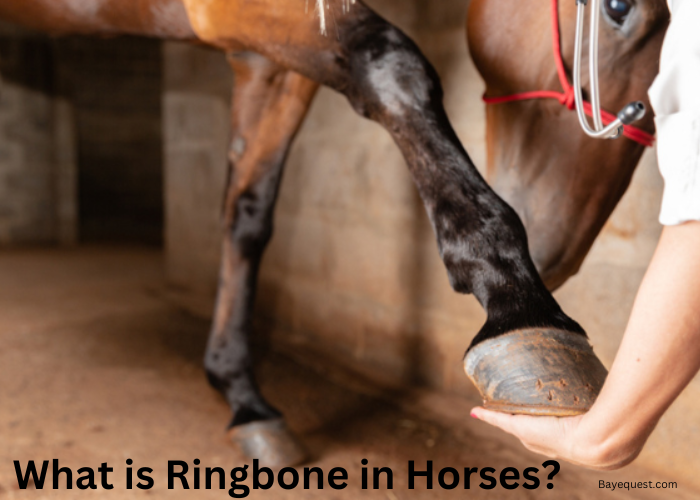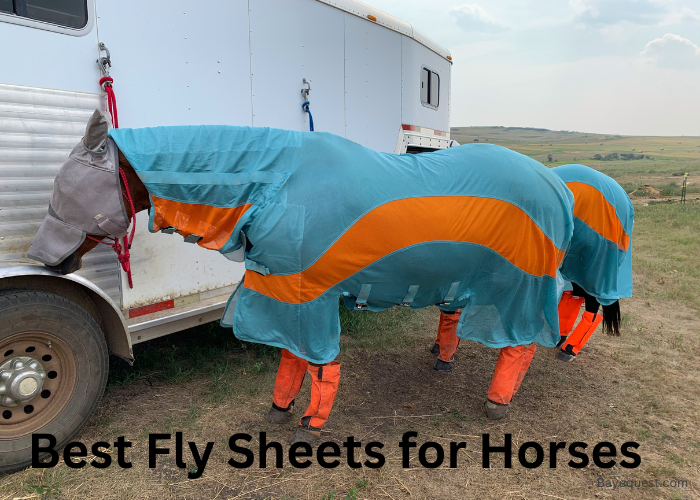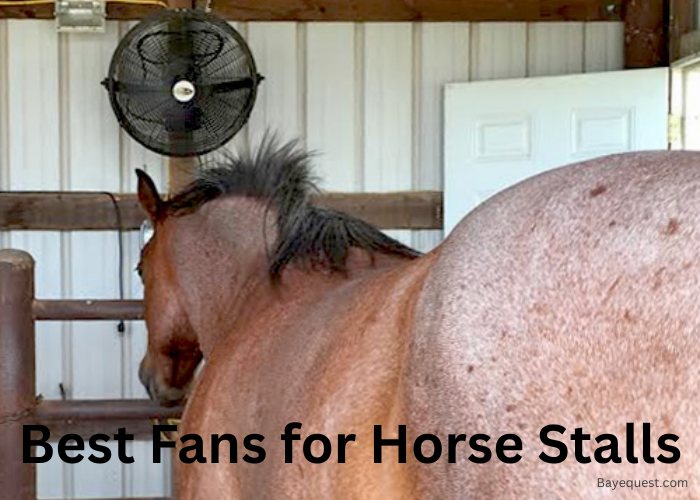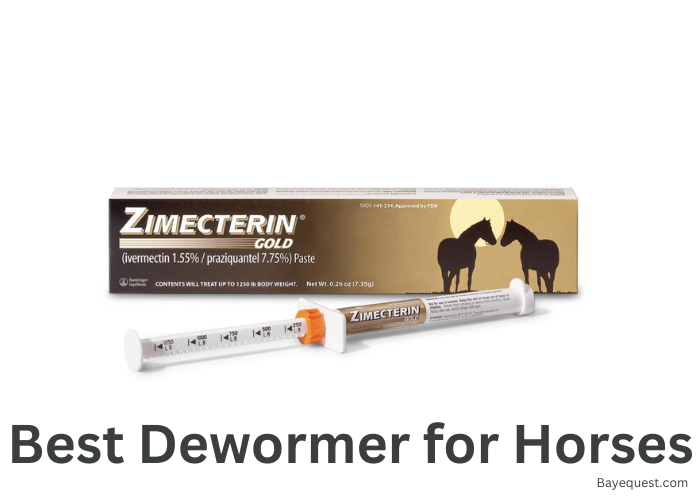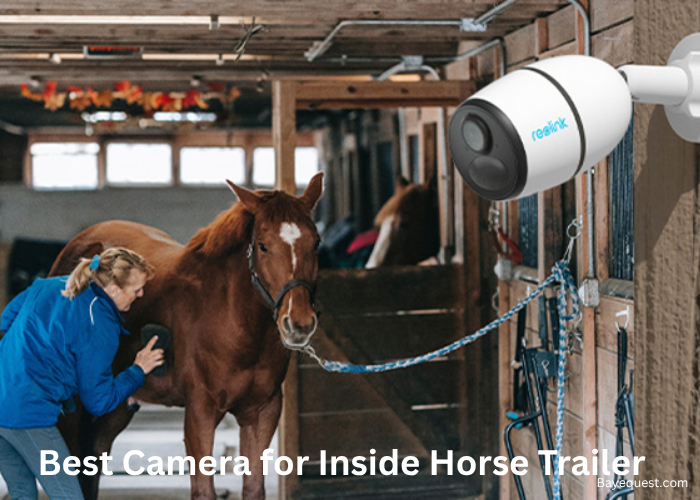A horse’s movement is a thing of beauty, but sometimes, trouble hides beneath the surface. Ringbone is a condition that can disrupt that natural grace.
It starts small, often going unnoticed, but it can lead to discomfort and stiffness over time.
This issue is more common than you might think, affecting horses of all breeds and ages.
Left untreated, it can severely impact their performance and quality of life.
In this article, we’ll dive into the details of ringbone, uncovering its causes, signs, and what can be done to manage it effectively.
What is Ringbone in Horses? Key Takeaway
Ringbone is a joint condition in horses with abnormal bone growth around the lower leg joints. It can cause pain, stiffness, and lameness. This condition affects the pastern or coffin joint. Stress, injury, or poor conformation are common causes. Early diagnosis and proper care can help your horse stay comfortable.
What is Ringbone in a Horse?
Ringbone is a painful, degenerative joint condition in horses where abnormal bone growth develops around the lower leg joints. It is usually due to chronic stress, injury, or poor joint alignment.
These bony growths cause inflammation and discomfort, making movement difficult and often leading to lameness. Ringbone can start with signs like stiffness or swelling and progress to the inability to walk, run, or perform.
Understanding ringbone is crucial for early detection and management to help keep your horse comfortable and active.
What Causes Ringbone in Horses?
Ringbone happens when a horse’s joints take too much strain or stress. I’t like wear and tear over time—hard work, rough ground, or repetitive movements can all lead to trouble.
Poor conformation, like upright pasterns or bad hoof angles, can add even more pressure to those joints, making things worse. Sometimes, it’s just in the genes, and a horse is born with a higher risk.
Injuries, bumps, or even infections around the joint can also kick-start the problem. It’s all about how much those joints can handle before they start to break down.
Types of Equine Ringbone
Ringbone in horses can be tricky. It’s not just one condition but comes in different forms.
Each type affects the horse in its way. Here’s what you need to know about each kind of ringbone:
High ringbone
High ringbone affects the pastern joint, located just above the hoof. This type is easier to spot because it causes visible swelling around the joint.
It’s usually caused by repeated stress, trauma, or poor leg conformation like upright pasterns.
Horses with high ringbone may show signs of stiffness, lameness, and discomfort, especially when moving.
High ringbone can make everyday activities painful for the horse. It requires careful management to keep them comfortable.
Low ringbone
Low ringbone occurs in the coffin joint, which is deeper and closer to the hoof. It’s harder to see since it’s hidden within the hoof structure.
You’ll often notice it through signs of lameness or difficulty in movement. Low ringbone usually results from similar factors as high ringbone, like stress or injury.
Because of its location, it often affects the horse’s ability to walk or run comfortably. Managing low ringbone can be tough and might need rest, medication, or even surgery in severe cases.
Articular ringbone
Articular ringbone directly impacts the joint surface. The bony growth develops on the joint itself, disrupting smooth movement.
This type is often more painful because it interferes with how the bones move together. It leads to inflammation and can cause severe lameness.
Horses with articular ringbone struggle more with movement, and the condition can get worse quickly. Treatment focuses on easing pain and reducing joint stress.
Non-Articular ringbone
Non-articular ringbone happens around the joint but not directly on it. The bone growth affects the area near the joint, pressing on tissues and nerves.
While it doesn’t damage the joint surface itself, it can still cause discomfort. This type is generally less severe than articular ringbone, but it still needs attention.
Regular hoof care, medication, and supportive therapies help keep the horse comfortable.
Clinical Signs and Symptoms of Ringbone in Horses
Here are the clinical signs of ringbone in horses and what they mean:
1. Lameness or stiffness. The most noticeable sign is lameness, which can vary from mild to severe. Horses may appear stiff, especially when starting to move after rest. It’s usually worse when turning or on uneven ground.
2. Visible bony swelling. You might see or feel hard, bony lumps around the affected joint. These growths can be small at first but often become more prominent over time.
3. Heat and swelling. The area around the joint can feel warm to the touch, indicating inflammation. Swelling might not always be obvious but is often present early on.
4. Reduced range of motion. A horse with ringbone may have difficulty bending or flexing the joint fully, making movements like trotting or turning more challenging.
5. Reluctance to work. Your horse might resist going forward, avoid certain gaits, or seem generally unwilling to perform tasks that were previously easy.
Risk Factors of Ringbone in Horses
Several risk factors can increase the chances of a horse developing ringbone. These factors can be related to the horse’s genetics, conformation, and daily activities.
Here’s a look at the main risk factors:
Poor conformation
Horses with poor leg conformation, such as upright pasterns, crooked legs, or improper hoof angles, are at a higher risk.
These conformation flaws place extra stress on the joints, making them more prone to wear and tear over time, which can lead to ringbone.
Repetitive stress and trauma
Horses that are frequently worked on hard surfaces or asked to perform repetitive movements, like jumping, racing, or intense training, are at a greater risk.
The constant pounding and stress on the joints can trigger inflammation and bone growth associated with ringbone.
Previous injuries
Past injuries, such as fractures, sprains, or joint inflammation, can weaken the joint and surrounding structures.
These injuries can disrupt normal joint function and make the area more susceptible to developing ringbone as the horse tries to compensate for the damage.
Age and wear
Older horses are more likely to develop ringbone due to the natural wear and tear on their joints over time.
As horses age, the cartilage and joint structures can break down, leading to conditions like ringbone, especially if the horse has been active throughout its life.
Genetics
Some horses are genetically predisposed to ringbone.
If a horse comes from a lineage with a history of joint problems or poor conformation, it is more likely to develop ringbone, even if it is well cared for and not overworked.
Improper hoof care
Poor hoof care, including neglecting regular trimming or shoeing, can cause imbalances in the horse’s gait.
This imbalance puts uneven pressure on the joints, increasing the likelihood of ringbone. Proper hoof maintenance is crucial in preventing excess joint stress.
Heavy body weight
Heavier horses or those that carry excessive weight for their size are at a greater risk. The added weight puts extra strain on the joints, accelerating wear and tear.
Managing a horse’s weight can be key in preventing conditions like ringbone.
Diagnosis of Equine Ringbone
Diagnosing ringbone in horses starts with watching how the horse moves.
The vet will check for signs of lameness, stiffness, or any unusual gait, especially when the horse turns or moves on hard ground.
They’ll feel around the joints, looking for heat, swelling, or those hard, bony lumps that could mean trouble.
To get a clear look inside, X-rays come next. They show exactly where the bony growth is and how severe it is.
This helps the vet see if it’s high or low ringbone, and whether it’s affecting the joint directly.
Sometimes, the pain isn’t easy to pinpoint, and that’s when nerve blocks come in. The vet will inject a local anesthetic into specific nerves near the affected joint.
If the horse moves better afterward, it confirms the problem area. This way, the vet knows for sure where the pain is coming from.
By combining a physical exam, X-rays, and nerve blocks, the vet can get a full picture of what’s going on and come up with the best plan to manage the ringbone.
Prognosis of Ringbone in Horses
The prognosis for ringbone in horses depends on several factors, like the type, location, and how advanced the condition is when diagnosed.
High ringbone has a better outlook than low ringbone. This is because it’s easier to manage with supportive care and corrective shoeing.
Non-articular ringbone, which doesn’t affect the joint surface directly, also tends to have a more favorable prognosis compared to articular ringbone, which impacts the joint’s movement.
However, ringbone is a progressive condition. This means it doesn’t go away and often worsens over time.
Early detection and proper management can help slow its progression and keep the horse comfortable.
Horses with mild to moderate ringbone can often continue to work at a lower level or in less demanding jobs with the right care.
In severe cases, especially when the joint surface is deeply affected, the outlook can be less promising.
Horses may struggle with persistent pain and lameness, even with treatment.
For these horses, long-term comfort and quality of life become the main goals, and they may need to retire from work or strenuous activities.
Overall, ringbone isn’t something that can be cured, but with the right approach, many horses can still lead active, comfortable lives.
Treatment and Management of Ringbone
Here’s how ringbone in horses can be treated and managed:
Non-surgical treatments
Non-surgical treatments focus on reducing pain and slowing the progression of ringbone. Rest and controlled exercise are key.
Too much movement can make things worse, but light exercise helps keep joints flexible. Anti-inflammatory medications, like bute or joint injections, help manage pain and swelling.
Corrective shoeing or trimming can also make a big difference. Special shoes can help redistribute weight and reduce pressure on the affected joints, making it more comfortable for the horse to move.
Surgical options
When non-surgical methods aren’t enough, surgery might be the next step. One common option is arthrodesis, or joint fusion, which permanently fuses the bones of the joint to stop painful movement.
It sounds drastic, but it can provide significant relief, especially in severe cases. Another option is removing the bony growths, though this isn’t always possible depending on the ringbone type and location.
Surgery is usually a last resort and is considered when other treatments don’t provide enough relief.
Alternative therapies
Alternative therapies can support traditional treatments or offer extra relief. Joint supplements with ingredients like glucosamine and chondroitin can help support joint health.
Physical therapies, like laser therapy or acupuncture, can also reduce pain and improve mobility.
Regular gentle exercise, like swimming or light groundwork, helps keep the horse moving without putting too much stress on the joints.
These methods aren’t cures, but they can improve the horse’s quality of life and keep them comfortable longer.
Read also: How to Treat Arthritis in Horses.
Medications and Supplements of Ringbone
Here’s a look at the medications and supplements commonly used to manage ringbone in horses:
1. Non-Steroidal Anti-Inflammatory Drugs (NSAIDs)
Medications like phenylbutazone (bute) and firocoxib are often used to reduce pain and inflammation. They help keep the horse comfortable by managing swelling around the joints.
NSAIDs are usually given short-term, but in some cases, they might be used for ongoing pain relief.
However, long-term use needs careful monitoring to avoid side effects like equine stomach ulcers.
2. Corticosteroid injections
Corticosteroids are powerful anti-inflammatories that can be injected directly into the affected joint. They provide fast pain relief and reduce inflammation right at the source.
These injections aren’t a cure, but they can buy time and make movement less painful. However, repeated use can have downsides, like weakening the joint over time, so they’re usually spaced out.
3. Hyaluronic acid injections
Hyaluronic acid helps lubricate the joint, making movement smoother and less painful. These injections work by restoring the joint fluid’s natural cushioning effect.
This is helpful in managing the stiffness that comes with ringbone. They’re often used alongside other treatments to improve the horse’s overall comfort.
4. Joint supplements (Glucosamine and Chondroitin)
Supplements like glucosamine and chondroitin support joint health by helping to maintain cartilage and joint fluid. They’re not a quick fix but can be helpful over time, especially when used consistently.
These supplements aim to slow down the wear and tear inside the joint, giving the horse better long-term support.
5. Omega-3 Fatty Acids
Omega-3s, found in supplements like fish oil, help reduce inflammation throughout the body.
They can be an easy addition to the horse’s diet and support overall joint health, working quietly in the background to keep inflammation levels in check.
6. Bisphosphonates
Bisphosphonates, like Tildren or Osphos, are used to slow down bone changes and reduce pain.
They work by inhibiting bone resorption, which can help manage the abnormal bone growth seen in ringbone.
These medications are usually given in a series of treatments and can offer relief for horses dealing with chronic pain.
Summary Table: Management Strategies for Ringbone
| Management strategy | Purpose | Possible Impact on Prognosis |
| Corrective Shoeing and Trimming | To balance the hoof and reduce joint strain | Improves movement and reduces pain, slowing progression |
| NSAIDs (Non-Steroidal Anti-Inflammatory Drugs) | To reduce pain and inflammation in the joints | Provides temporary relief, allowing the horse to stay more comfortable |
| Controlled Exercise and Rest | To maintain mobility without overloading the joints | Helps prevent further damage and maintains overall joint health |
| Joint Injections (Corticosteroids or Hyaluronic Acid) | To provide targeted relief from joint pain and improve movement | Can significantly reduce pain, improving quality of life in the short term |
| Weight Management | To reduce strain on the joints by maintaining a healthy weight | Decreases the burden on joints, potentially slowing the progression of ringbone |
| Alternative Therapies (Laser, Acupuncture) | To support pain relief and improve joint function | Enhances overall comfort and mobility, supporting other treatment methods |
What is the Farrier’s Role in Treating Ringbone?
The farrier plays a huge role in managing ringbone. It’s not just about trimming and shoeing; it’s about making the horse’s feet work better with the rest of the leg.
The farrier looks at the horse’s hoof balance, angles, and how each hoof hits the ground. Correcting these can take a lot of pressure off the painful joints.
Special shoes can be fitted to help. Rolled toes or rockered shoes allow the hoof to break over more easily, reducing strain on the joint.
Pads can be added to cushion the impact, especially on hard ground. The goal is to change how the foot moves and lands, making every step less painful for the horse.
Regular, skilled trimming is also key. Keeping the hooves properly balanced stops uneven forces from aggravating the joint.
The farrier works closely with the vet to adjust as needed, making sure that what’s being done on the ground matches the treatment plan.
Together, they create a support system that helps manage ringbone from the hoof up.
Prevention Tips of Equine Ringbone
Preventing ringbone starts with good, basic care. Keep those hooves in top shape with regular trimming and shoeing.
A balanced hoof means less stress on the joints, so make sure your farrier checks for proper angles and fit.
Watch the ground you work on, too. Hard or uneven surfaces put extra strain on a horse’s legs.
Mixing up the footing, like using softer ground or arena work, helps reduce that constant impact.
Avoid overworking your horse, especially on hard ground. Gradually build up strength and stamina, and always give plenty of rest when needed.
If your horse has poor conformation, be mindful of the workload and avoid activities that put extra stress on the joints.
Proper conditioning and warm-ups are key. Make sure your horse is fit for the job, with muscles that support the joints and reduce stress.
And don’t forget regular check-ups with the vet—catching issues early can prevent small problems from becoming big ones.
Finally, maintain a healthy weight. Extra pounds mean extra pressure on those joints.
Keep your horse fit and trim to help avoid unnecessary strain. With these simple steps, you can help keep ringbone at bay and your horse moving comfortably for years to come.
How Does the Weather Affect a Horse With Ringbone?
Weather can have a big impact on a horse with ringbone. Cold, damp weather often makes joints stiffer and more painful.
You might notice your horse moving slower on chilly mornings, taking longer to warm up, or being more reluctant to work.
The cold seems to tighten everything up, making the bony growths more noticeable and movement more uncomfortable.
Wet and muddy conditions are also tough. Slippery ground can cause the horse to lose footing, putting extra strain on already sensitive joints.
If the ground is uneven or rutted, it adds to the stress, making each step a bit more challenging.
Hot weather isn’t much better. Hard, dry ground can create jarring impact with every step, worsening the joint pain.
The horse might struggle on firm footing, especially if it’s been baked hard by the sun. On top of that, heat can make inflammation feel worse, adding to the overall discomfort.
Keeping your horse comfortable means paying attention to the weather and adjusting care as needed.
Warm blankets in the cold, soft footing when it’s dry, and careful management of exercise routines can all help ease the weather’s effects on a horse with ringbone.
What is Ring Bone in a Horse? FAQs
Can a horse with a ringbone continue working?
Yes, a horse with ringbone can continue working, but it depends on the severity and how well the condition is managed. Light work are often possible, especially with proper pain management, corrective shoeing, and regular vet care. However, high-impact or strenuous activities might need to be avoided to prevent further stress on the joints.
What is the average lifespan of a horse diagnosed with ringbone?
Ringbone doesn’t directly affect a horse’s lifespan, but it can impact their quality of life and ability to work. With good management, many horses live normal lives despite the condition. The key is regular care, monitoring, and making adjustments to their workload and routine to keep them comfortable.
Does ringbone affect a horse’s ability to breed?
Ringbone itself doesn’t usually affect a horse’s ability to breed, as it’s primarily a joint condition. However, if the horse experiences significant pain or mobility issues, it might impact their ability to perform certain breeding activities.
What is Equine Ringbone? Conclusion
Ringbone might sound like just another bump in the road, but for horses, it’s a game-changer.
This sneaky condition doesn’t have a magic fix, but with the right care, your horse can still lead a good life.
From smart shoeing to managing daily routines, every little bit helps. Keep an eye on those joints, work closely with your vet and farrier, and make the changes that count.
It’s all about balance—keeping your horse moving, comfortable, and feeling their best.
Because at the end of the day, it’s not just about managing ringbone; it’s about managing life with it.




